Hello Again From NE5DX.
Here are More Boat Anchor
Pictures. Just a FEW as Not To Be Too Boring!
Nobody Likes To See The Other Guy's
Vacation Pictures! Same Thing Goes Here.
----------------------
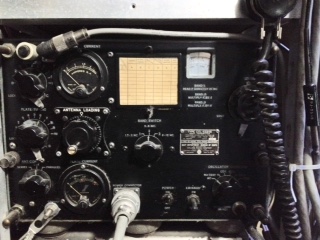
Another daily user; A Collins Navy TCS-4 transmitter. Built in late 1940 or early 1941 (look at the lack of "pulls" and the use of brass studs in each corner. The face is not punched to handle the loops used in later models). This old transmitter was used by Naval land based forward units and mobile installations as well as most PT Boats and destroyers plus a host of anything that floated or rolled. After the war they were sold as surplus and used well into the 1980's by shrimp boats, tug boats, the Coast Guard and most boats on the great lakes and in the Gulf of Mexico
It's unknown exactly where this old rig was used, however, the cardboard label on the front lists Coast Guard and tug boat frequencies as well as US Navy frequencies. When purchased at the Belton Ham Expo, it had been stored in or next to a chicken coop and was full of feathers and other "chicken" stuff!!! It was ugly and nasty, however, the fact the base and cabinet are constructed of heavy stainless steel and the frame is CAST aluminum, it could have been a lot worse! It was literally hosed out in the back yard and dried in the sun then the cabinet and front panel were repainted. It was on the air in just over a week after the power supply was completed.
Being a Collins design it's VFO is very stable plus it is plate modulated and actually sounds great. When the 30 watt output it's capable of is coupled to a Heathkit SB-220 amp, it puts out 300 watts AM all day long. It just kind of "idles" along.
-------------
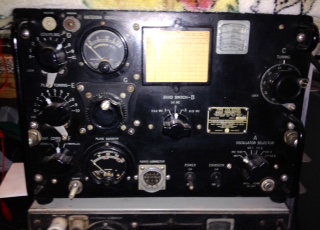
Another TCS transmitter, this one a TCS-12. It's been serviced and also works fine. It has no shock mounts and base and has a black wrinkle painted steel cabinet.
--------------
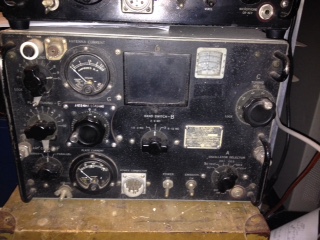
Yet another TCS-12, also cleaned up, repaired and working. It, however, is awaiting a complete set of tubes. This one is has no shock mounts or base and is not stainless steel. It has a grey cabinet.
--------------

Here is a TCS-12 receiver. It was purchased from an eBay seller in the Chicago area. (This was when old radios were cheap and shipping inexpensive!) He said he had been used on the Great Lakes by him personally for years before retiring as a fisherman. He claimed it when the radio system was "modernized" in the boat in the early 1990's. He had never used it after it was removed and was parting with it to help pay medical bills. It had no serious corrosion but did need quite a bit of cleaning. It had no base or shock mounts, however, many receivers were stacked with a transmitter and shared mounts.
In a QSO with another retired fisherman, also from the Great Lakes, he told me tales of hosing down the wheel-house with soap, water and brooms to get rid of all the fish "stuff" that worked it's way in there. He said the old TCS set was routinely scrubbed down this way and always worked. Apparantly when the FCC required "Type Accepted" HF equipment be used, many couldn't afford it so the TCS was still used way up into the 1980's or later by quite a few.
----------------
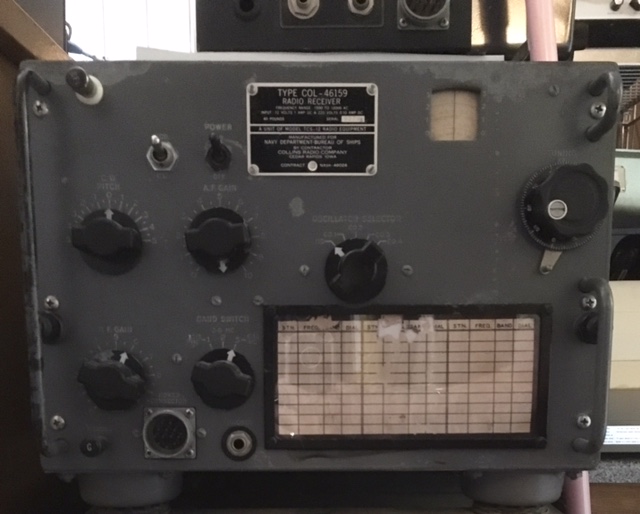
One last TCS-12 receiver, this one all in grey and 100% original.
-----------------
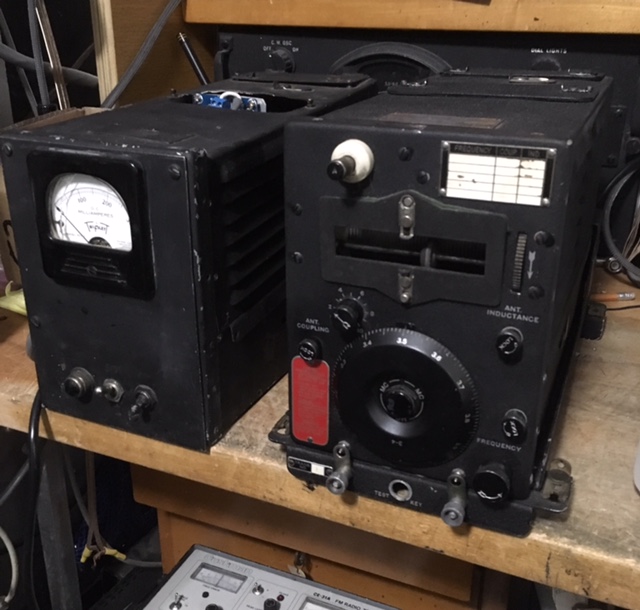
A project still on the bench. This is a CBY-52209 80m transmitter on an MT/69-ARC-5 mount. It's, of course, what most of us initially call an ARC-5 transmsitter. To be specific, only about 10% or so of these old airborne transmitters are actually an ARC-5 variant. The power supply is sadly a repurposed ARC transmitter that as been stripped and built-up for power supply duties. It was purchased for $5 at Belton and modified on my bench. The transmitter is actually up and running, and dead on frequency. It appeared to be 100% original even to the point it had a cardboard tag from a 1946 deployment tied to the antenna connection. You can safely say it sat on a shelf for 70 years (somewhere) only to work at is should recently. Next comes a modulator project to get this thing on 3885.
----------------
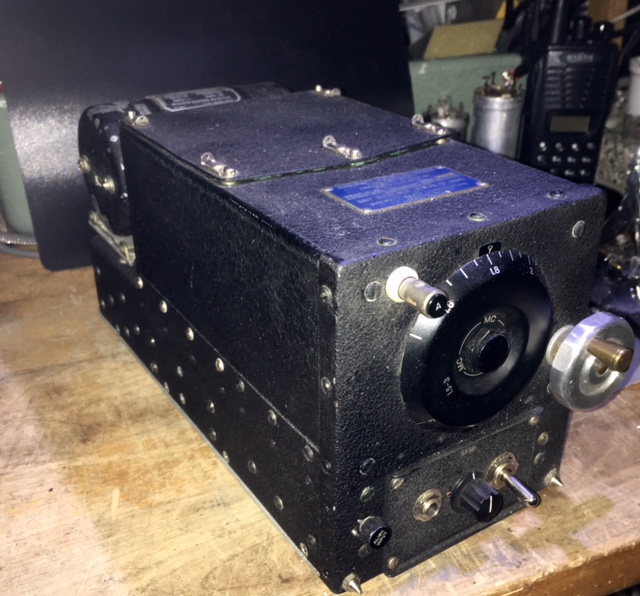
This is a CBY-46104, another cousin to the ARC-5. This one has an intersting history. Many, many moons ago N5WFC, Bill in Elgin TX picked this up in Taylor TX at the National Guard Amory. It seems they were tossing all the "old" gear stored there. It was still wrapped, never opened and never used - brand new. Bill removed from it's packing and it as sat displayed for all of these years. Bill passed it on to me recently and before the day was out, the dynamotor was whirring smoothly and it was receiving noise on 160m. Another piece of equipment that has sat for over 70 years only to work pretty well exactly as designed the first time powered up. The only mods were to add the volume control and BFO switch. Nothing that can't be reversed, nothing else done to it.
-------------
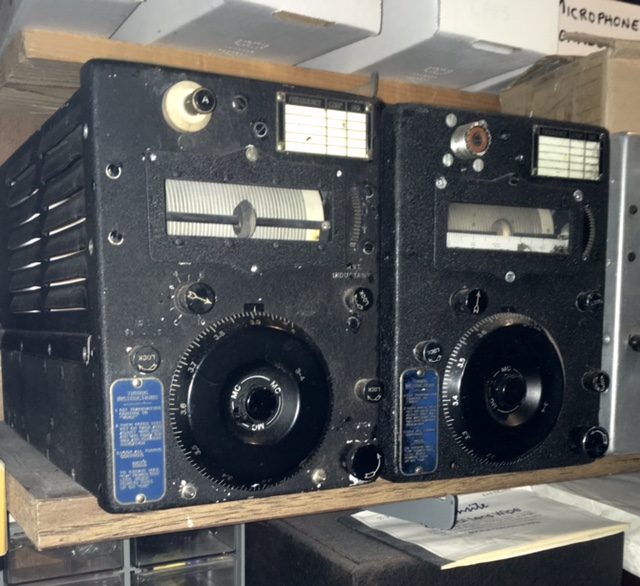
A nice pair of BC-454's, one completely original and possibly unused, one with minor mods, note the SO-239. I imagine the scuffs, scratches and dust come from years of neglect. Who knows how many hands these have passed through since WWII...
---------------
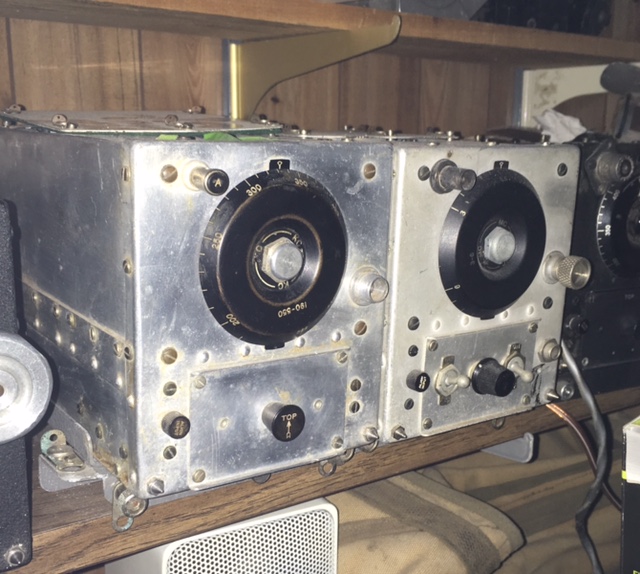
Yet another pair of BC-xxx receivers on an ARC rack. The one on the left a low freq model and untouched with a dynamotor, it's just tarnished. When this was purchased a few years ago, tucked under the "hood" was a sales receipt where in 1947 this receiver was purchased along with 2 knob splines. Total cost was $7.50. It appears to be untouched from that date on.
As a 13 year old kid back in the 1960's, I ordered a 40m version of the ARC-5 from John J. Meshna surplus sales in Mass. It turned out to be from the Canadian Air Force and was a 12v model.... Boy I wish I had kept that one. It disappeared 20 years ago in a move. Thanks to an old ARRL Handbook and a Surplus Conversion Manual, I got it up and running with my first homebrew power supply. The total cost of the rig was $13.50, shipping included. I used birthday money to order it. I ordered an 80m version with Xmas funds later the same year.
-----------------
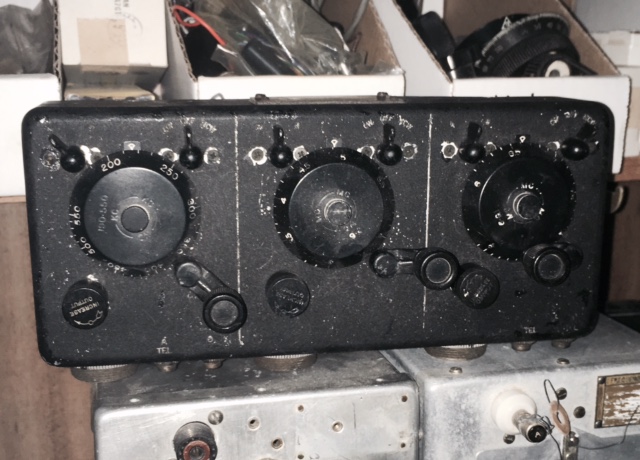
Here's a BC-450a 3-gang tuning head.
-------------
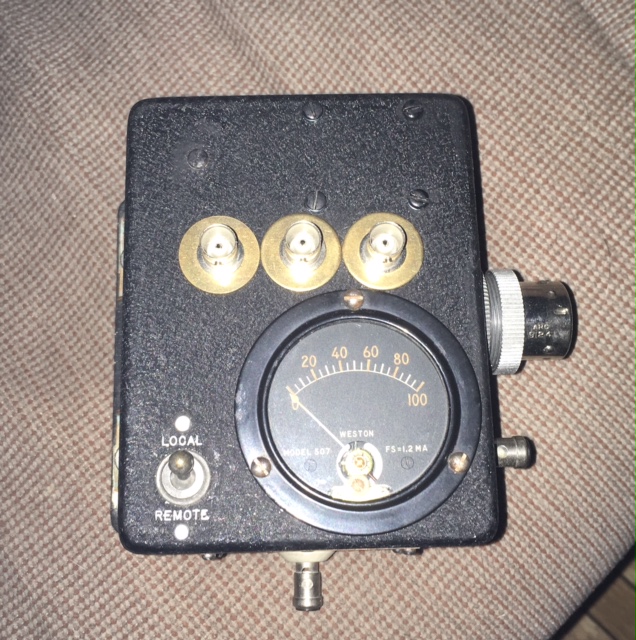
Here's a RE-2/ARC-5 antenna switch with connector. The spring loaded stud antenna connectors were replaces with BNC, but, it's totally reversable and the original parts are actually stored inside the unit as not to get lost. Works fine. Plans are to pair it up with the CBY-52209 recently put on the air.
------------------
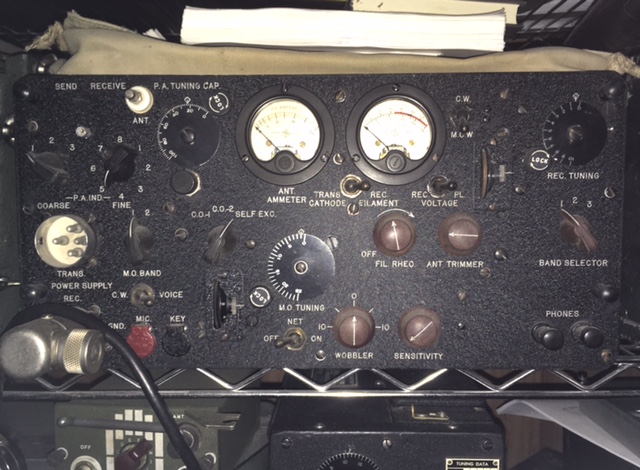
Here is a TBX-4, one of several radios used by the Code Talkers, not in bad shape but without a cabinet and cover. Would love to find a pair. I was told by a old timer that he literally tossed the actual transceiver from several sets and used the case and cover for a storage container. I passed up a number of 'em years ago, "what would I want with that?", famous last words. The TBX saw service mainly in the Pacific during WWII by the Navy and Marines. Others saw service elsewhere but since it was primarily a portable transceiver, it spent a lot of time in forward positions and temporary installations. It was not the primary transceiver used by the Codetalkers, but it did see service with them.
---------------
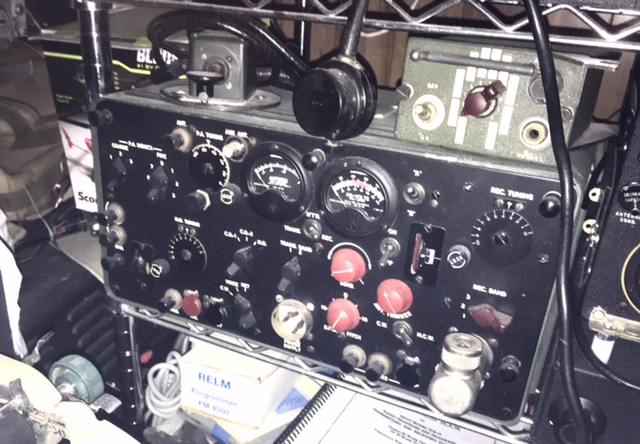
This is the final model in the TBX series, a TBX-8. It apears that it was passed on to a MARS group from where I purchased it. It was obviously surplus new at the time they received it. The factory shipping cellophane that covers the plastic transceiver instruction cards in the cover is still in place. The power supply for the TBX-8 is simpler than for the other TBX series and much easier to build. This unit does work. Displayed on top is the water resistant key, microphone and crystal calibrator.
The TBX-8 did not see the service the earler models did, it was released near the end of the war so few were deployed in combat areas, so they did turn up surplus-new but not in huge numbers.
----------------
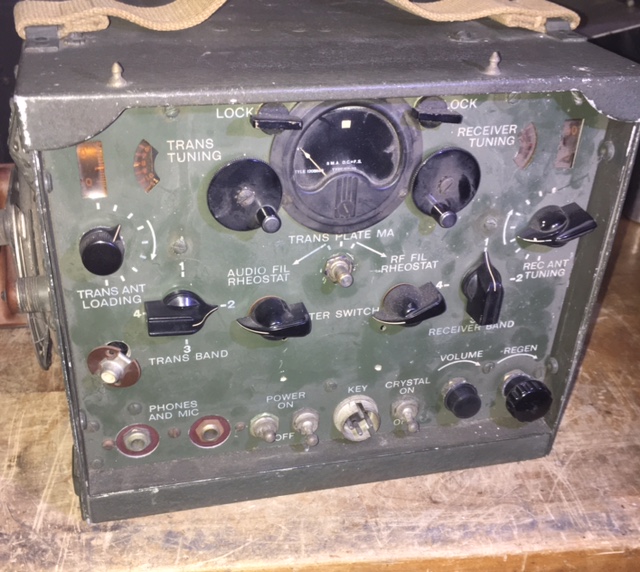 - -
Shown here is a recent find: A before shot of a Navy TBY backpack transceiver. This is a short range portable VHF transceiver that was used mainly by forward forces but was sometimes used for more secure communications when ships were in close proximity. It's 1/2 watt output prevented the signal from being located or heard at any great distance. Later in the war the SCR-300-A/BC-1000-A came along and it's freq range fell in the middle of the TBY's.
The transceiver was one of several used by the famous Codetalkers and can be seen often in period newsreels and of course in the movies. The TBY was VHF and pretty well must be used to communicate with another TBY, unlike the TBX and eventually the SCR-536 which were HF. CW or AM phone emissions are available.
***
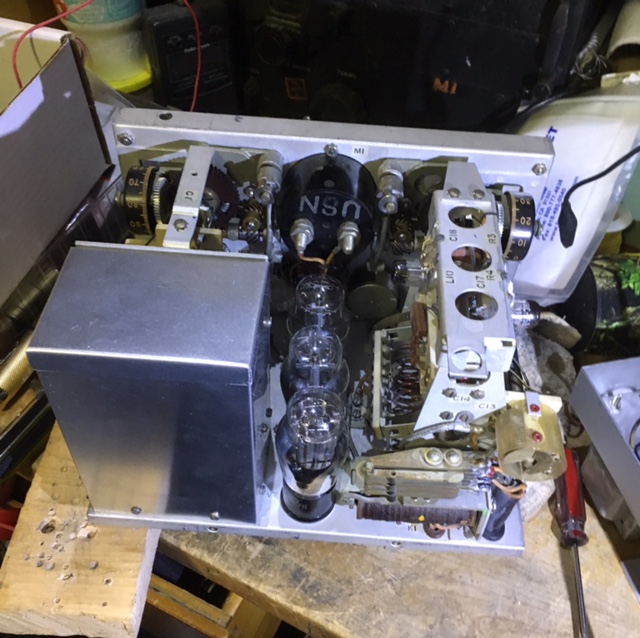
Here's a back view after the cleanup and re-assembly plus replacement aluminum shields on your left were built and fitted to match the original.
Along with the entire front panel removed for a general cleanup, a bathtub capacitor was restuffed with modern parts and most resistors were checked. Tubes were replaced and it's large number of rotary contacts were cleaned among a long list of other tasks performed.
***
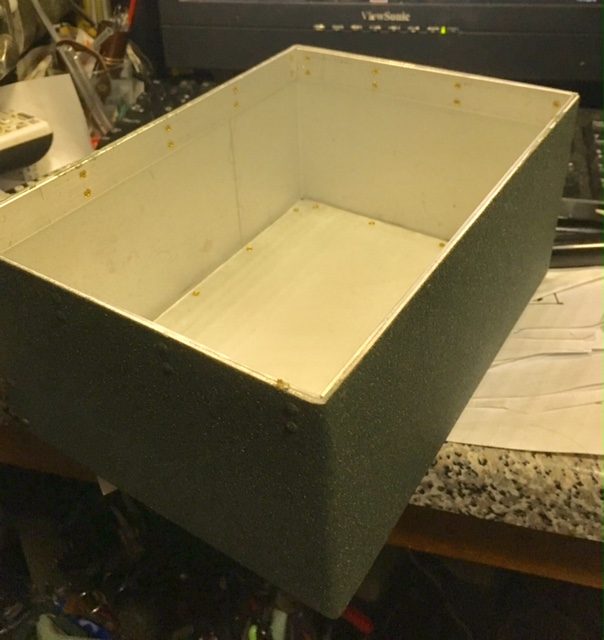 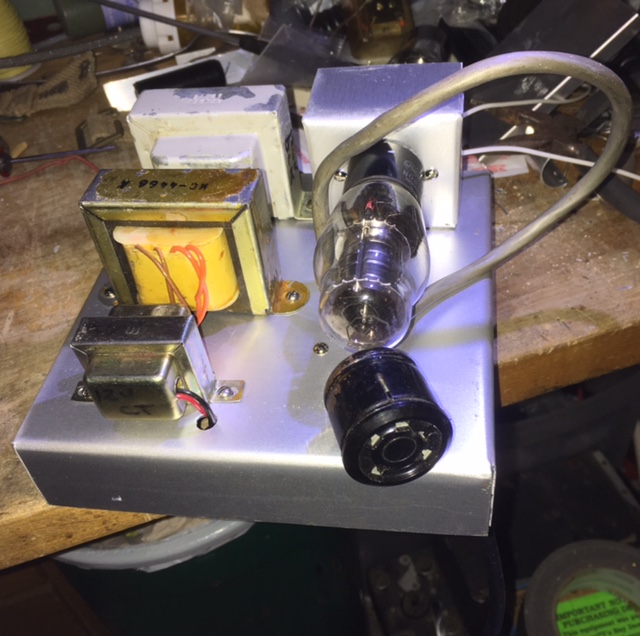
The power supply was missing so a replica base was fabricated and painted. It is true to size and was fitted with a new homebrew AC supply and chassis. It was fabricated using 2mm aluminum sheet, brake bent then riveted together before painting. The original power supply could have been one of several designed for it. It included 115VAC, 6VDC and a portable battery pack. There were possibly other solutions used since it's most important task was field use. In the future, once the parts and pieces are found, a 12VDC/120VAC power supply will be built and replace the AC only supply shown here.
***
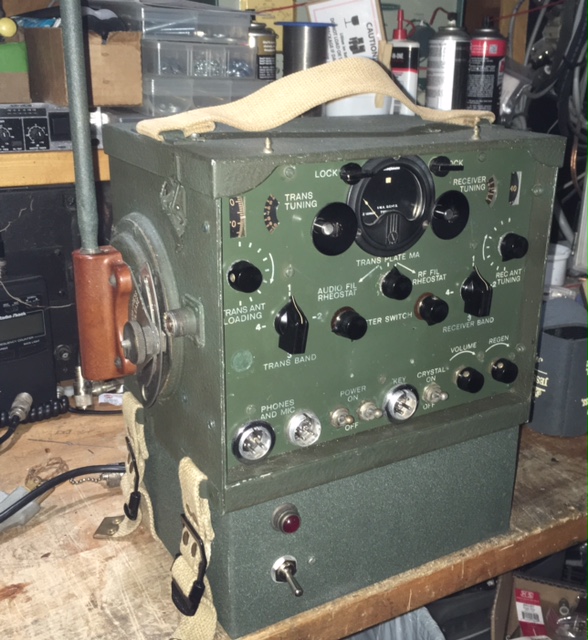
The last shot is the finished and working radio, with the exception of a little touch-up. Period Dakaware knobs were found to replace missing ones and two new microphone connectors were replaced. It's not particularly a good performer, after all it's a simple super-regen receiver, but it is a neat piece of history.
|
|












